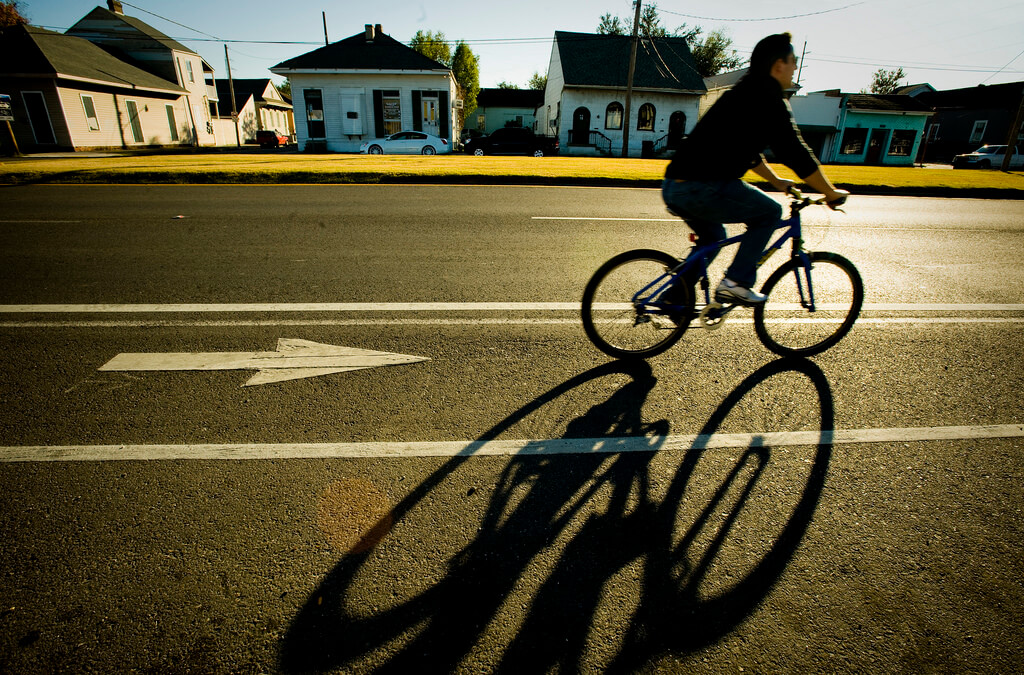Autumn Gear Guide
Find inspiration in our Gear Guide that will keep you out on your bike through wind or rain.
Download NowCrashes can happen, but taking due precaution can dramatically lessen the chances.
As a cyclist, I have had some moments where I thought, “this is how I am going to go.” As a lawyer, I have encountered tragic bicycle crash cases. Many of the types of crashes I see could often be avoided if people regularly reviewed bicycle safety. Whether you are a bona fide safety guru or a casual rider, it is important to review and familiarize yourself with some bicycle safety rules to help prevent your commute to work from becoming an unwanted commute to the hospital.

Photo by Tulane Public Relations
It sounds obvious; repetitive; redundant, but there are countless things that inadvertently divert our attention to the road. Whether it is a catchy advertisement, a runner down the street, or an irritating, partially deflated, and not-quite-the-way-I-like-it tire pressure, losing focus could result in a mangled frame, or a fractured clavicle.
A simple way to eliminate distractions is to maintain your bike before your commute. Look for imperfections. Test your brakes, are they going to stop you when a car unexpectedly merges in your lane? Make sure your derailleur will shift according to command. Fill your tires with the right amount of air. Even thinking about how you regret not filling up your tires before you left home this morning is enough to divert your attention. In college, my friend rode an old road bike with a brake handle that would fall off every time he used it. Much of his commute to school was spent adjusting, repairing, while still riding to make it to class in time. Don’t be him. If your bike is broken, fix it. Don’t ride on it; much of your focus will be on your bike, and not on the road.
No matter what safety precautions are put in place, crashes will still happen. We can’t account for the unexpected. States and communities, however, are constantly trying to enact new laws and programs that will increase safety for you on the road. For example, some states have a strict three foot rule that requires cars to give cyclists at least three feet whenever they are passing. It also allows cars to cross the center lines (even if it’s a double yellow) to do so. Some states incorporate the “Idaho Stop”, allowing you to roll through an intersection. Other states require you to stop and wait 90 seconds before safely proceeding through a red traffic signal. Laws like these are important to know. It gives you the power of confidence as a cyclist and informs you as a driver. So, know your stuff. Take the time to study rules of the road in your state to know what you can and cannot do. Just remember, bikes in the U.S. are considered vehicles and as a default are required to follow the same principles.
Contact us for a free manual with advice from what to do in a cycling crash to getting the right insurance policy (yes, cyclists need insurance). Note: the manual is based upon Utah laws; however, the principles of cycling are universal. Article by the Accident Injury Lawyers at Christensen & Hymas
Find inspiration in our Gear Guide that will keep you out on your bike through wind or rain.
Download Now
This is really helpful. I will surely follow your tips.
Good, but a little short. I would add the Layers of Safety, explicitly mention situational awareness as a separate concept, and some encouragement to learn some bike handling skills. Even a situation like wet leaves or gravel in a bike lane can lead to a fall and if one knows how to recover from road hazards, that is a good thing.
An interesting article, but I couldn’t quite see the point of emphasising that this was the view of an attorney. There is a tiny amount of legal information there, about which jurisdictions have different laws for intersections, but other than that, any cyclist could have written it.
Wow, this is an exceptionally low value, victim blaming post.
What very constructive feedback, David.
I didn’t get “victim blaming” out of this. What I got is “a couple of ways to keep yourself from becoming a victim by your own hand”. There are things that are within our control, so we should make sure that we are actually controlling those things.
Bicycle crashes don’t necessarily have to involve motor vehicles. Many times, people crash bikes into walls, utility poles, guard rails, and each other. I can’t begin to count how many times I’ve seen people go over handlebars because they were to preoccupied to notice the drain grate or the streetcar track. One of my riding buddies fell off her bike because she forgot to re-tighten her seatpost clamp. Earlier this month, I saw a guy go full-speed into a pothole because he had his face in his smartphone while he was riding.
Then there are the people who don’t maintain their bikes. Brakes that don’t stop. Chains that snap just as you’re trying to beat traffic or that train. The tire that you should have replaced 5 years ago shreds. Derailleurs jam. QR levers pop loose. Stuff that’s less likely to happen if you’re diligent, attentive, and knowledgeable.
Comments are closed.